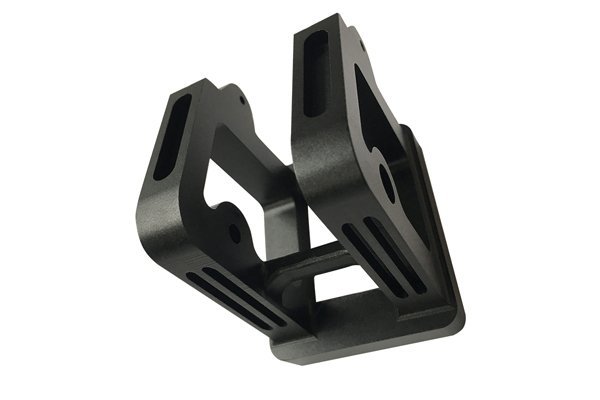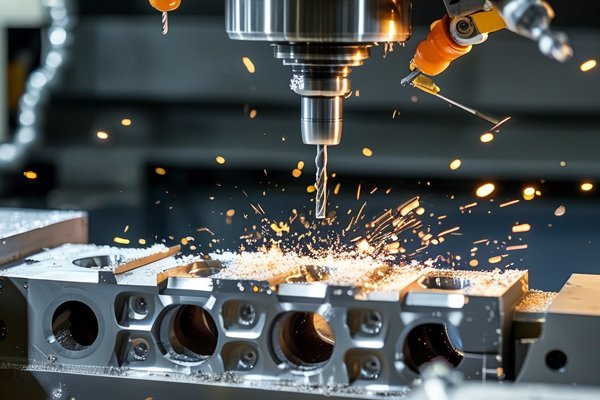Did you know that the global medical device market is projected to reach $665 billion by 2026, growing at a CAGR of 5.4%? This explosion in demand for medical devices is attributed to technological advancements, an aging population, and a rising prevalence of chronic diseases. With this growth comes the increasing necessity for precision engineering, particularly in the manufacturing of medical metal components. Among the best solutions available is CNC machining—a technology that promises accuracy, efficiency, and adaptability.
In this comprehensive blog post, we will explore the many benefits of CNC machining in producing medical metal components, navigating the complexities of the medical manufacturing industry, examining the role of precision machining, and offering insights into best practices. By the end, you will grasp why CNC machining has become a game-changer in medical device manufacturing.
Understanding CNC Machining
CNC, or Computer Numerical Control, machining is a manufacturing process that uses computer software to control machine tools. This technology enables the fabrication of materials with high precision and consistency. CNC machines can perform a variety of operations, such as drilling, milling, turning, and engraving, and can process a range of materials.
CNC Machining Process Breakdown
Advantages of CNC Machining for Medical Metal Components
In the medical field, the importance of precision cannot be overstated. Even minute discrepancies can lead to adverse effects on patients. CNC machining excels in providing tight tolerances, often within (+/-)0.01mm. This precision is essential when manufacturing components like surgical instruments or implants, as they must fit seamlessly and integrate perfectly within the human body.
One of the defining features of CNC machining is its ability to reproduce components consistently. Once the CNC program is set, it can repeat the machining process with the same precision over thousands of units. This consistency is critical in medical device manufacturing, where hundreds or thousands of identical parts may be required.
Medical devices often require intricate designs that would be incredibly challenging—or even impossible—for traditional machining methods to replicate. CNC machining offers the capability to create complex geometries with ease, allowing for innovations in device design.
CNC machining can accommodate a range of materials commonly used in the medical field, including various metals like titanium, stainless steel, and aluminum, as well as plastics. This versatility makes it the go-to method for creating diverse components like brackets, housings, or specialized surgical instruments.
With CNC machining, production cycles can be significantly shortened. The automation of the machining process reduces human error and increases machining speeds, ultimately leading to faster turnaround times. This efficiency can be particularly beneficial when responding to urgent medical needs.
Although the initial costs of setting up CNC machinery and creating programs can be substantial, CNC machining proves to be cost-effective in the long run. This approach reduces labor costs while optimizing material usage, minimizing waste, and maximizing production output.
Due to the automated nature of CNC machining, the amount of human labor required is drastically reduced. This is particularly advantageous in the medical field, where contamination risk is a significant concern. CNC allows for greater cleanliness and reduced exposure to potential contaminants during manufacturing.
Applications of CNC Machining in the Medical Industry
Surgical instruments, such as scalpels, forceps, and clamps, must be produced with exacting specifications to ensure that they function correctly during procedures. CNC machining allows for the precise cutting and shaping of these tools, ensuring they meet stringent medical standards.
Medical implants—such as hip or knee replacements—require high levels of precision and durability. CNC machining of metals like titanium and cobalt-chromium ensures that implants can withstand the unique stresses they will face in the body.
Components of diagnostic devices, such as X-ray machines or MRI machines, also benefit from CNC machining. The accuracy achieved through CNC machining is paramount in ensuring that these devices function optimally and deliver precise results.
CNC machining plays a vital role in creating personalized prosthetic devices tailored to an individual’s specific needs. By leveraging CNC technology, manufacturers can enhance the fit and functionality of prosthetics, improving the quality of life for patients.

In addition to standard components, CNC machining allows for the innovative design and production of custom tools and accessories tailored to specific needs within the medical field.
Overcoming Challenges in CNC Machining for Medical Components
While CNC machining brings an array of advantages to medical component manufacturing, it is not without challenges. Here are some common issues and how to address them:
Medical devices are subject to stringent regulations to ensure patient safety. Navigating these requirements can be complex.
Solution: Stay informed about current regulations and engage with compliance experts during the design and manufacturing stages to ensure that all components meet necessary standards.
Selecting the right material is crucial for the performance of medical components. Not all materials are equally suitable for CNC machining.
Solution: Work closely with material scientists and engineers to identify the most appropriate materials for each application, balancing cost, durability, and machinability.
The investment in CNC equipment and specialized software can be significant. Smaller manufacturers may find these initial costs challenging.
Solution: Look into leasing options or partnerships with larger manufacturers who can provide access to CNC machinery without a substantial upfront investment.
The evolution of technology requires that staff be continually trained on the latest CNC systems and software.
Solution: Invest in ongoing training programs for technicians and engineers. Encourage team members to attend workshops and conferences to stay abreast of industry advancements.
Best Practices for CNC Machining in the Medical Field
Quality machining begins with a well-thought-out design. Utilize advanced CAD software to create accurate models that adhere to manufacturing standards and confirm the design’s feasibility before proceeding to CAM programming.
Effective tool path optimization minimizes machining time, enhances surface finish, and prolongs tool life. Employ simulation software to visualize machining processes before implementation.
Using high-end CNC machines equipped with the latest technology will enhance precision and efficiency. Regular maintenance and updates to machinery are essential for continued performance quality.
Implement stringent quality control measures at every production stage, including throughout material selection, machining processes, and final inspections. Utilize a range of inspection tools, from calipers to laser scanners, ensuring quality standards are met.
Building networks with design engineers, material scientists, and regulatory consultants can streamline the development process and help tackle challenges more effectively.
Adopt a mindset of continuous improvement in your processes, whether through refining techniques, investing in new technologies, or welcoming feedback. Employ methodologies like Six Sigma to enhance efficiency and reduce errors continually.
The application of CNC machining in the manufacturing of medical metal components stands as a hallmark of precision, efficiency, and innovation. With the medical industry poised for continued growth, embracing CNC technology is essential for companies aiming to meet the rising demand for high-quality medical devices.
Throughout this blog, we’ve explored the vast benefits of CNC machining—from its unmatched precision and cost-effectiveness to its capability for producing complex geometries. We’ve also discussed challenges and best practices that can help companies excel in this dynamic field.
Understanding and implementing the strategies covered in this blog will not only aid manufacturers in producing reliable and safe medical solutions but also contribute to improving patient outcomes. Ultimately, CNC machining stands not just as a method of production, but as a critical component in the broader mission of advancing healthcare technology.
As the medical landscape evolves, investing in and leveraging advanced machining techniques will help ensure that your organization remains competitive, efficient, and committed to quality. It’s crucial to stay informed and proactive, making strategic moves today that can shape the success of tomorrow’s medical advancements.






